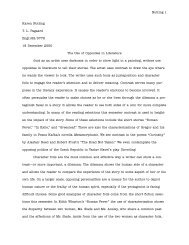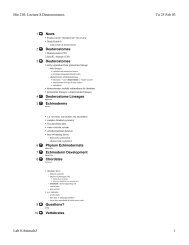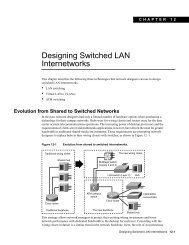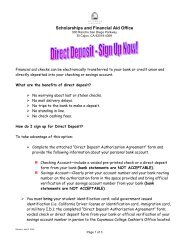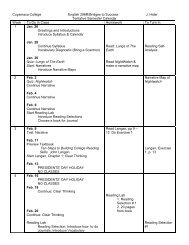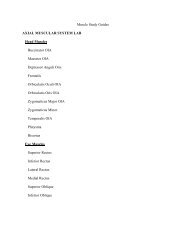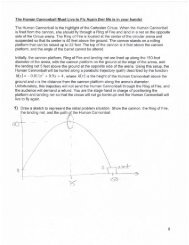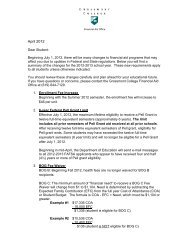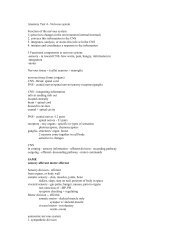Create successful ePaper yourself
Turn your PDF publications into a flip-book with our unique Google optimized e-Paper software.
However, In Figure 12 we notice that none of the child routes have 24 left-most bits (/24 mask displayedin the parent route) that match the destination IP address of 172.16.4.10. At most, only 21 bits match.Figure 12IP Packet 172.16.4.10 10101100 00010000 00000100 00001010No match!Child Route 172.16.3.0 10101100 00010000 00000011 00000000Child Route 172.16.1.0 10101100 00010000 00000001 00000000Child Route 172.16.2.0 10101100 00010000 00000010 00000000So what happens next? <strong>The</strong> router drops the packet!Because the router is running the default, no ip classless, classful routing behavior is in effect. Whatthis means is that the router will not look beyond the child routes for a lesser match. <strong>The</strong> routing tableprocess will not use the default route, 0.0.0.0/0, or any other route.S* 0.0.0.0/0 is directly connected, Serial1Why? <strong>The</strong> general idea of clasful routing behavior comes from the days when all networks were of aclassful nature. This is when companies, colleges, etc., applied to InterNIC (or similar institution) for IPaddress space and received a Class A, Class B, or Class C major network address. Once a companyhas a classful IP major network address, it of course includes any and all of the subnets for that address.So the idea is that the routers in this network would know about all of the subnets for this major network.If the subnet isn’t in the routing table, then it doesn’t exist.As you can see this doesn’t work well for discontiguous subnets, like we have in our example. It alsodoesn’t work for real world IP address allocation, where an ISP owns the address space and divides it upto its individual subscribers.I have left out quite a bit of information and details on this subject. For more information I would suggestreading information regarding CIDR (Classless Inter-Domain <strong>Routing</strong>) and similar topics.Let’s summarize what happens with classful routing behavior, the no ip classless command. If there is amatch with a parent route, and after examining the child routes there is not a match, then the routingprocess drops the packet. Default and supernet routes are not examined or used. (Figure 13)Figure 13<strong>Routing</strong> Behavior: classful (no ip classless)Packet’s Destination IP Address: 172.16.4.10RouterB#show ip routeCodes: C - connected, S - static, I - IGRP, R - RIP,Gateway of last resort is 0.0.0.0 to network 0.0.0.01. Match 172.16.0.0/24 is subnetted, 3 subnets2. No Match R 172.16.1.0 [120/1] via 172.16.2.1, 00:00:13, Serial03. No Match C 172.16.2.0 is directly connected, Serial04. No Match C 172.16.3.0 is directly connected, FastEthernet0C 192.168.1.0/24 is directly connected, Serial1S* 0.0.0.0/0 is directly connected, Serial15. Drop Packet RouterB#12



